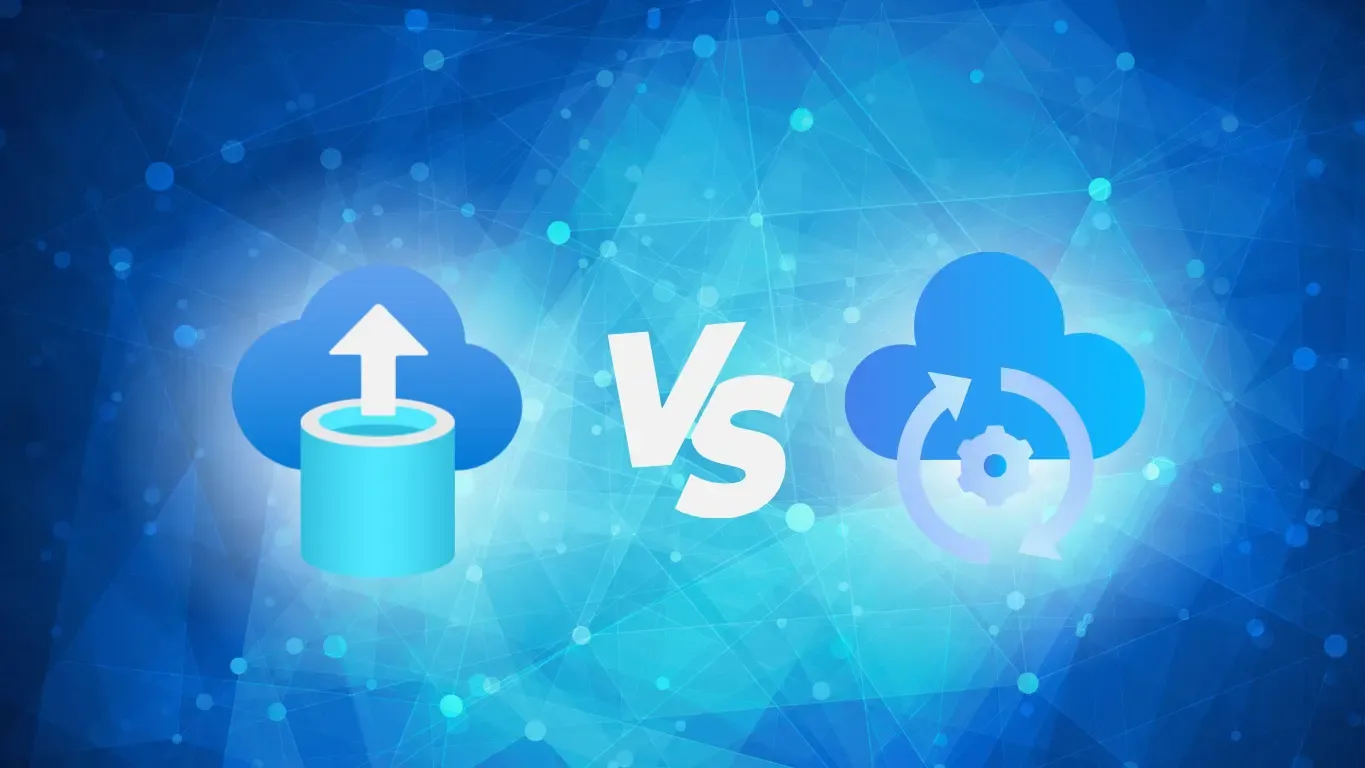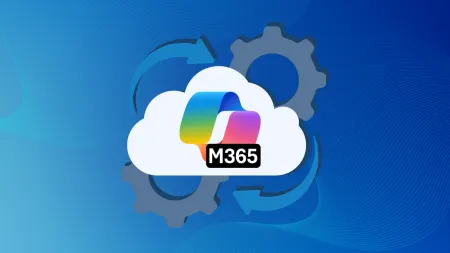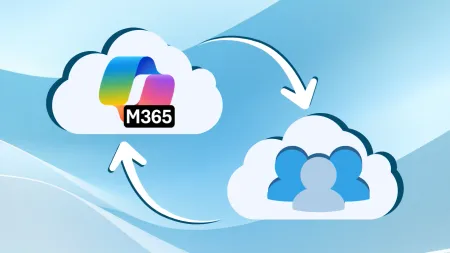Choosing Between Azure Database Migration Service and Manual Migration
Should you use Azure Database Migration Service or migrate databases manually? Compare the pros and cons of both methods and choose the right approach for your migration.

Choosing Between Azure Database Migration Service and Manual Migration
Moving your databases to Azure can be a complex process, and careful planning is required to ensure things go as smoothly as possible. Whether you’re moving data from on-premises databases or another cloud environment, one of the first decisions you will need to make when planning your migration is what method you will use. While you have the option to perform a manual migration, this is a time-consuming and resource-intensive approach that can lead to costly downtime. For this reason, many organizations choose to take advantage of Azure Database Migration Service (DMS). This is a fully managed service provided by Microsoft that improves the efficiency of database migrations by offering features like automation, data assessment, and migration planning.
Yet, how will you know whether you should use Azure DMS or migrate your databases manually? Keep reading to learn more about your database migration options and how you’ll know which one is right for you.
What is Azure Database Migration Service (DMS)?
Azure Database Migration Service (DMS) is a fully managed database migration service that simplifies the process of transferring your on-premises databases to an Azure cloud database. DMS provides a thorough, systemic, and effective automated solution for migrating your databases to the cloud. Azure DMS also supports multiple database types, including SQL Server, Oracle, MySQL, MongoDB, and PostgreSQL, enabling you to easily move data, objects, and schema to Azure while ensuring minimal downtime.
What is Manual Database Migration?
Instead of using Azure DMS, you also have the option to perform a manual migration. This involves manually creating, managing, and maintaining custom scripts or tools to move objects from your existing database to Azure. This process is often more time-consuming and resource-intensive than using DMS to automate the migration process, but it may be a better solution if you have a small database or want to be able to customize your migration. A manual migration includes several steps, including exporting data from the source database, schema recreation and validation in Azure SQL, and data import and transformation. IT professionals may use a variety of tools to assist them with their manual migration, such as SQL Server Management Studio, Data-tier applications (BACPAC), and custom ETL scripts.
Key Differences Between Azure DMS and Manual Migration
So, what exactly is the difference between Azure DMS and manual database migration? A few of the key differences between these two migration methods include:
- Automation: One of the biggest differences between the two is that Azure DMS is a fully automated migration process, whereas manual migrations require manual scripting and execution.
- Complexity: Another significant difference between these two approaches lies in their complexity. While Azure DMS simplifies schema and data migration, manual migrations are much more complex and require deep database expertise.
- Downtime: Using an automated system like Azure DMS also greatly reduces the risk of downtime during your migration when compared to manual migrations.
- Performance: While Azure DMS is optimized for fast, efficient transfers, manual database migration can be a slow, tedious, and error-prone process.
- Error Handling: Speaking of errors, Azure DMS has built-in validation and error detection, which can help further reduce errors. Alternatively, manual migrations require manual troubleshooting, which increases the risk of errors going undetected.
- Best For: Azure DMS is best used for large-scale migrations and complex environments, whereas manual migration may be the best option for small databases and simple structures.
Benefits of Using Azure Database Migration Service
Compared to performing a manual migration, there are numerous advantages to choosing Azure DMS, as DMS can help improve the efficiency of your migration while reducing downtime. A few of the benefits of choosing Azure DMS include:
Automated and Simplified Migration
Azure DMS automates much of the migration process, including critical steps such as data transfer and schema conversion. This greatly simplifies the migration process for you and your team, as automating migration processes saves time. Additionally, not only can Azure DMS help migrations proceed more quickly and efficiently, but automation also greatly reduces the likelihood of errors.
Minimal Downtime with Online Migrations
In addition to offering automation, Azure DMS also supports online migrations, which helps reduce downtime. Additionally, Azure DMS provides continuous data replication, which further reduces downtime by making production databases available during transfer.
Integration With Azure Migrate
Azure DMS can also be used in conjunction with Azure Migrate, which can allow you to develop a more comprehensive data migration strategy.
Scalability for Large Databases
Azure DMS is suitable for use in a variety of circumstances because of the scalability it provides, as it can handle databases of all sizes, from tiny to very large. DMS is even suitable for complex migrations, as it can handle workloads across multiple databases.
Challenges of Manual Database Migration
While manual database migrations may seem like the simpler solution, particularly if you aren’t familiar with Azure DMS, the fact is that manual migration can cause many challenges, including:
High Risk of Human Errors
One of the biggest risks of choosing manual database migration is the higher chance of error. The fact is that even your most skilled IT personnel are not error-proof, and potential errors during a manual export can lead to data loss or corruption. Even the most carefully planned and executed manual migration will need extra testing and verification to ensure data was migrated correctly.
Longer Migration Time
The fact is that humans simply can’t match the efficiency of automation, which means that manual migrations tend to take much longer than if you’d used Azure DMS. Due to the additional time manual migrations require for schema recreation and testing, it is not a practical solution for large or complex migrations.
Increased Downtime Risks
During manual database migrations, extended downtime is almost unavoidable, especially when dealing with large datasets. Furthermore, manual configuration issues can lead to extended disruptions, resulting in more costly downtime for your business.
Limited Scalability
Scalability is much more limited with manual database migrations. This means that manual migrations typically are not suitable for large databases with complex dependencies.
When to Choose Azure DMS vs. Manual Migration
So, how will you know whether you should choose Azure DMS or a manual database migration? Ultimately, this will come down to a variety of factors, including the complexity of your migration, how much control you want over the migration process, and your company’s resources. Below, we’ll break down when you should choose Azure DMS vs. manual migration.
Choose Azure DMS if:
- You Have a Large Migration: With features like continuous data replication and automated schema migration, DMS is the better option for handling large, complex databases and schemas.
- Minimal Downtime is Required: If one of your biggest priorities during your migration is minimizing downtime to ensure business continuity, then Azure DMS is your best option, as manual migrations tend to involve more downtime.
- Time is of the Essence: If you’re looking to boost efficiency and execute your migration in a timely manner, you should choose Azure DMS, as the Automation offered by DMS can help reduce the length of your migration.
Choose Manual Migration if:
- Your Migration is Small: If your migration involves a smaller database or a simple schema structure, choosing manual migration may be the simpler, more cost-effective option.
- Customization is Needed: You should also choose manual migration if customization is important to you, as manual migration provides more opportunity for customizing configurations and making manual adjustments.
- You’re Unfamiliar With DMS: While Azure DMS has the potential to make database migrations simpler and more efficient, successfully using DMS requires a certain level of expertise in Azure. If you’re unfamiliar with Azure and/or DMS, you may find the learning curve high, and using DMS could prove to be unnecessarily time-consuming, particularly if your migration is small. However, the learning curve for DMS may be worth it for large and complex migrations.
Contact Agile IT for Expert Azure Database Migration Support
While migrating your databases to Azure can seem like an overwhelming prospect, leveraging tools like Azure DMS can help ensure that this process goes smoothly while reducing costs and downtime. If you aren’t sure where to start your migration, consider partnering with an experienced managed service provider (MSP) like Agile IT. We can provide the expert guidance you need to navigate your Azure database migration.
Feel free to contact us today to learn more about our services, including how we can help you maintain compliance during your migration.





